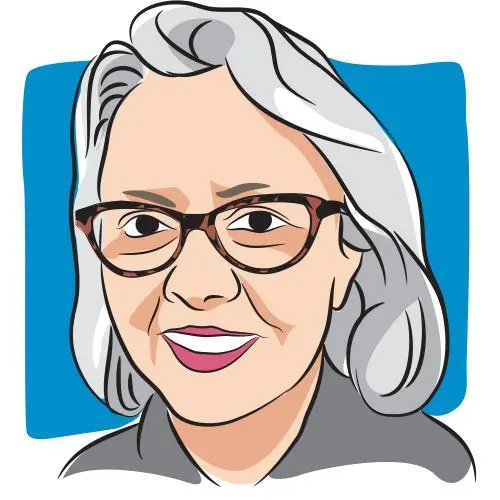Article
Learning to Walk Again
Author(s):
We stumble, we fall, we hear the cancer may have returned, we wait for tests to come back and we have rough times along the way. We need to learn to walk, whether we are limping or not.
I have mentioned several times that I have a hearing-ear dog who accompanies me everywhere. She is my ears, my safety net, my constant companion and my heart. She has alerted me to many dangerous and important sounds over the past 10 years, ranging from doorbells, to phones, to people coming up behind me and startling me. She has accompanied me to every doctor appointment and chemo treatment at the cancer center, where the staff has treats for her.
Until last spring when tragedy hit.
Sita tripped over a curb and developed a serious limp. I took out a loan for her medical bills since she is my canine “child.”
We tried water therapy, laser therapy, gel shots and staying off her feet for two weeks. It seemed like every treatment knows to man — or dog in this case – wasn’t working. And she was in obvious pain, which nearly killed me.
Meanwhile, I developed insomnia from worry, my cancer symptoms bothered me more due to stress and I didn’t know where to turn.
But just as I am getting wonderful medical care, Sita got fantastic veterinary care. My local veterinarian referred me to an orthopedic specialist for animals. He did some diagnostic tests and discovered lots of arthritis in the elbow. She became worse and worse, and my heart broke as the light went out of her eyes, the wags from her tail and the bounce from her step.
I decided to take the risk of a surgery to remove the arthritis on a 13-year-old dog because of her pain. After a few tense weeks of recuperation, she miraculously began to recover. Sita and I are joined at the hip — literally – and I could see she was no longer in that awful hurting stage.
Slowly through treatments like physical therapy administered by me, chiropractic treatments by another veterinarian specialist and soothing lotions, I witnessed her old spirit returning and the tail began to wag again. Best of all, the light was back in her gorgeous, amber eyes.
She still, however, walks with a slight limp. The veterinarian told me he thought it was stiffness, not pain. He warned me to use a leash and support her going up and down the steps to my apartment. A couple of times she stumbled, and when I told him that he answered, “She has to learn to walk on all four legs again.”
That simple statement hit me like a ton of bricks. Don’t we all have to do this after a cancer diagnosis? Our lives are turned upside down and inside out. Depending on the type of cancer, we have to tolerate surgery, radiation and chemo attacking our bodies. And recovery doesn’t come easily. Sometimes it takes months or years to recuperate, and many times we are never back to where we were. Even though I didn’t need surgery, I need to gauge my energy and know I will never be completely well again.
It takes most people a while to walk on two (not four) feet again! We stumble, we fall, we hear the cancer may have returned, we wait for tests to come back and we have rough times along the way. We need to learn to walk, whether we are limping or not. Or some even use a wheelchair — I admire the people sailing through the waiting room at the cancer center full speed ahead and I need to get out of their way!
Sita was so valiant and tried hard to do what I wanted her to. She never once whined or cried, and the people who took care of her during her surgery told me how much they loved this dog! Sita just moved on and taught me an important lesson.
Yes, she still has a slight limp, but everyone who knows her tells me the old vivacious Sita is back. Like Sita, I have a similar limp of not feeling good, chemo fog and chemo shots. I move very slowly those days.
But the people who love me are happy I am going on. I feel the same about Sita, who loves her walks again. So, whether you are a dog walking on four legs or a person on two legs (or a wheelchair), just take a lesson from my dog and keep on moving!




